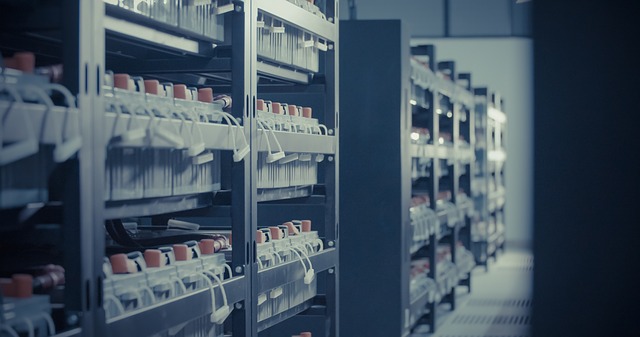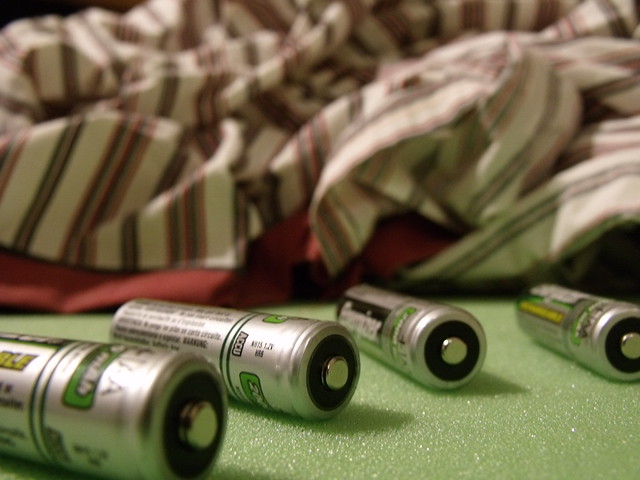Li-Ion Battery Definition
Jul 31, 2019 Pageview:1417
Introduction
The world of batteries is now dominated by lithium ion battery technology. Li-Ion batteries have become very popular and they are now used in a wide range of electronic devices. A lot of research about lithium ion batteries is going on in order to find more ways to use the batteries. Ever since the batteries were first introduced into the market, they have gone through many improvements which have made them popular among the consumers. The batteries have actually become safer thus consumers do not have to worry about using unlike it was in the past years. This article seeks to explain what a lithium ion battery is, its characteristics and how it works.
What is Lithium Ion Battery (LIB)?
A lithium ion battery is a rechargeable that features advanced battery technology that uses lithium ions as the key component for its electrolyte. Li-Ion battery was first commercialized in 1991 and is now used for portable devices worldwide. The batteries feature high energy density, high discharge power and long service life.
The LIBs started in the early 1980s and their principle of current was actually completed in 1985. Since their commercialization in 1991, LIB performance has risen dramatically. Their performance has greatly improved the portable electronic world with nearly every electronic being powered by lithium ion battery.
During discharge, the lithium atoms in the anode are ionized and separated from their electrons. The ions then move from the anode, passing through the electrolyte and get to the cathode. At the cathode, the ions combine with their electrons and they electrically neutralize. The lithium ions are very small and that’s why they are able to pass through a micro-permeable separator between the anode and the cathode.
Lithium ion batteries can use several different materials as electrodes. Normally the most common combination is that of lithium cobalt oxide and graphite. In this combination, the lithium cobalt oxide is the cathode while graphite is the anode. This combination is commonly used in Li-Ion batteries for laptops and cell phones. Other cathode materials that are used include lithium manganese oxide and lithium iron phosphate. Lithium ion batteries typically use a class of organic compounds as an electrolyte.
Lithium Ion Battery Characteristics
Lithium ion battery has several characteristics. The attributes make them the preferred power source for handheld devices.
· Small size and light weight – Li-Ion batteries are of small size and are lightweight. They have a compact design which makes the perfect type if batteries to use in electronic devices. They may be small in size and lightweight but very powerful.
· No memory effect – Li-Ion batteries do not have a memory effect or voltage depression, therefore, you don’t need to discharge them first in order to charge them.
· High energy density – high energy density makes Li-Ion batteries perfect for different applications. They have a higher energy density than Nickel-based battery packs.
· Low maintenance – Li-Ion batteries have little or no maintenance. This can help you save money in the long run.
· High capacity – lithium ion batteries have a high capacity which can be used to power a device for a longer period. They provide long-lasting power which helps eliminate all the inconveniences that are common with the low capacity energy storage devices.
· Longer battery life – Li-Ion batteries have a longer cycle life. One cycle life involves discharge and charging. These batteries can last longer if you do not overcharge them or completely discharge them. The number of cycles that the battery can withstand, however, decreases as the battery ages. As the battery ages, the capacity decreases too and the battery may fail after several years.
· Low discharge – Li-Ion batteries have a low discharge rate. They don’t lose a lot of energy when they are left unused. They lose about 5% per month.
Ageing is always a concern when it comes to lithium ion batteries. Ageing leads to the deterioration capacity, whether the battery is in use or not. Temperature is another thing to be concerned about. Lithium ion batteries should not be exposed to high temperatures. This is because they can lead to unwanted chemical reactions in the cells which likely to cause irreversible damage to the cells. Also, the batteries should not be charged or discharged in freezing temperatures.
Manufacturers are constantly improving the lithium ion battery. More research is being conducted and now we can see new and enhanced chemical combinations being introduced after every other time. They are also working to improve the safety of these batteries. In fact, the cases of explosions and fires caused by lithium ions are rarely heard. Many that actually today is mainly due to the use of counterfeit batteries that do not meet the safety standards. Therefore, it is always important to ensure you are acquiring a high-quality Li-Ion battery that of course meets the safety standards.
How Does a Lithium Ion Battery Work?
A lithium-ion battery is a rechargeable battery that gives us the convenience of electricity in a portable form. Lithium-ion batteries power the lives of so many people across the globe each day. from laptops and cell phones to hybrid and electric cars, this advanced battery technology is really growing in popularity due to its lightweight, high energy density, and better yet ability to recharge. But do you how a lithium ion battery works?
In order to understand how it works, you need to know the basics, which include anode, cathode, electrolyte and separator. The anode and cathode accommodate the lithium. The electrolyte carries the positively charged lithium ions from the anode to the cathode and vice versa through the separator. When there is a movement of the lithium ions, there is a creation of free electrons in the anode which creates a charge at the positive current collector. The current then flows through the device that is being powered - whether it is a camera, a cell phone or a laptop – to the negative current collector.
When the battery is discharging, the anode gives up some of its lithium ions to the cathode. This, therefore, creates a flow of electrons from one side to the other. When the battery is charging the opposite happens, which is lithium ions move from the cathode through the electrolyte to the anode. When there is no more movement of ions, the battery is fully charged and ready to use.
Conclusion
Lithium ion batteries are the latest battery technology and it is doing very well. The batteries are very compact and lightweight and are used to power a wide range of portable electronic devices. The batteries are very popular due to their convenience in terms of power and the ability to recharge.
- Prev Article: How Much Do Lithium Batteries Cost?
- Next Article: Lithium Ion Battery Round Trip Efficiency
Leave Message
Hottest Categories
-
Hottest Industry News
-
Latest Industry News











